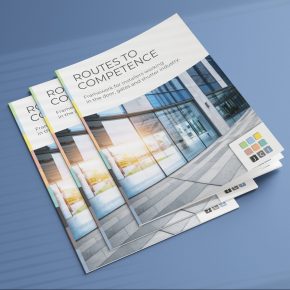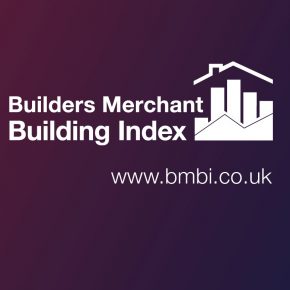
Why is rubber the new go-to material for low maintenance, long-lasting roofing?
For starters, EDPM rubber (or, to give it its full name, ethylene propylene diene monomer (M-class) rubber) roofing is exceptionally easy to install. Unlike traditionally utilised flat roof coverings, such as bitumen felt/mineral felt based roofing solutions, EDPM rubber roofing does not require torching or welding to be installed, drastically increasing the safety of the installation process, while also minimising associated complexity.
Unless any existing coatings on the roof need to be removed prior to installation, EDPM rubber roofing only requires a layer of adhesive to be applied to the roof in order to be correctly installed. This in turn reduces noise and odour to completely inoffensive levels.
EDPM rubber is also famed for its extreme resistance and durability; a very favourable characteristic in a roofing material. One of the most important facets of a roofing material needs to be an ability to protect the roof, and by extension, the property as a whole, from the worst that British weather can throw at it. EDPM rubber roofing is more than up to the task; it also features exceptional resistance to ozone and ultra violet rays. Whatever the environment throws at it, it can take, all while remaining tough enough to be safely walked upon.
As you would assume from the fact the word rubber appears in its name, EDPM rubber is also exceptionally flexible. This means that you are far less likely to see damage to your roof from the naturally occurring expansion and contraction of architecture (which occurs in extreme heat or cold). The enhanced flexibility, especially when compared to other more rigid flat-roofing solutions, ensures that EDPM rubber is resistant to tearing and cracking, and also more resistant to degradation, or becoming brittle with age. Indeed, most varieties of EDPM rubber roofing are guaranteed for at least 25 years of use!
As well as all of the exceptionally useful features above, certain proprietary varieties of EDPM rubber roofing feature an even greater number of desirable properties. RubberBond FleeceBack EDPM roofing, manufactured by Carlisle-Syntec USA, and installed by RubberBond, features a unique fleece backing, further reinforcing it. This provides RubberBond FleeceBack EDPM roofing with even greater durability, with 30 year old roofs still performing as new.
When compared to traditional modified bitumen roofing, RubberBond FleeceBack EDPM roofing was able to sustain almost three times as much force before puncturing (55.8 kg for modified bitumen and 149.2 kg for RubberBond FleeceBack EDPM). When compared to standard EDPM rubber roofing, RubberBond FleeceBack EDPM demonstrated a staggering 140% greater puncture and tear resistance, further illustrating its superior construction.
So, EDPM rubber offers easy, safe installation; as well as long-lasting durability and flexibility. If you need to weather proof and protect a flat roofed commercial or residential building, an EDPM rubber roofing system is exactly what you’re looking for.
Latest news

25th April 2024
ADSA: Competence Initiative Makes Progress
The Joint Competency Initiative (JCI), in which the Automatic Door Suppliers Association (ADSA) is involved, is finalising its first framework for installers within the door, gates and shutter industry.
Posted in Access Control & Door Entry Systems, Architectural Ironmongery, Articles, Building Associations & Institutes, Building Industry Events, Building Industry News, Building Products & Structures, Building Regulations & Accreditations, Building Services, Continuing Professional Development (CPD's), Doors, Facility Management & Building Services, Health & Safety, Innovations & New Products, Publications, Research & Materials Testing, Restoration & Refurbishment, Retrofit & Renovation, Security and Fire Protection, Site Preparation
25th April 2024
BMBI: Value sales in first two months were -3.4% down
The latest Builders Merchant Building Index (BMBI) report shows builders’ merchants’ value sales were down -4.7% in February compared to the same month a year ago.
Posted in Articles, Bathrooms & Toilets, Bathrooms, Bedrooms & Washrooms, Bricks & Blocks, Building Associations & Institutes, Building Industry News, Building Products & Structures, Building Services, Civil Engineering, Concrete, Cement, Admixtures, Drainage, Floors, Hard Landscaping & Walkways, Interior Design & Construction, Interiors, Landscaping, news, Paints, Paints, Coatings & Finishes, Plant, Equipment and Hire, Plumbing, Posts, Publications, Research & Materials Testing, Restoration & Refurbishment, Retrofit & Renovation, Sustainability & Energy Efficiency
24th April 2024
The lowdown on Origin’s New Soho Offering
Origin’s Soho External Door is the first launch in its new generation of products, setting a higher standard for the fenestration industry.
Posted in Access Control & Door Entry Systems, Aluminium Products, Architectural Ironmongery, Articles, Building Industry News, Building Products & Structures, Building Systems, Doors, Innovations & New Products, Posts, Restoration & Refurbishment, Retrofit & Renovation, Security and Fire Protection
24th April 2024
Mitsubishi Electric welcomes new code of conduct for smart appliances
Mitsubishi Electric welcomes a new code of conduct on energy smart appliances which the European Union (EU) announced yesterday at the Hannover Fair in Germany.
Posted in Air Conditioning, Articles, Building Industry Events, Building Industry News, Building Products & Structures, Building Regulations & Accreditations, Building Services, Exhibitions and Conferences, Facility Management & Building Services, Heating Systems, Controls and Management, Heating, Ventilation and Air Conditioning - HVAC, Plumbing, Retrofit & Renovation, Seminars, Sustainability & Energy Efficiency
 Sign up:
Sign up: